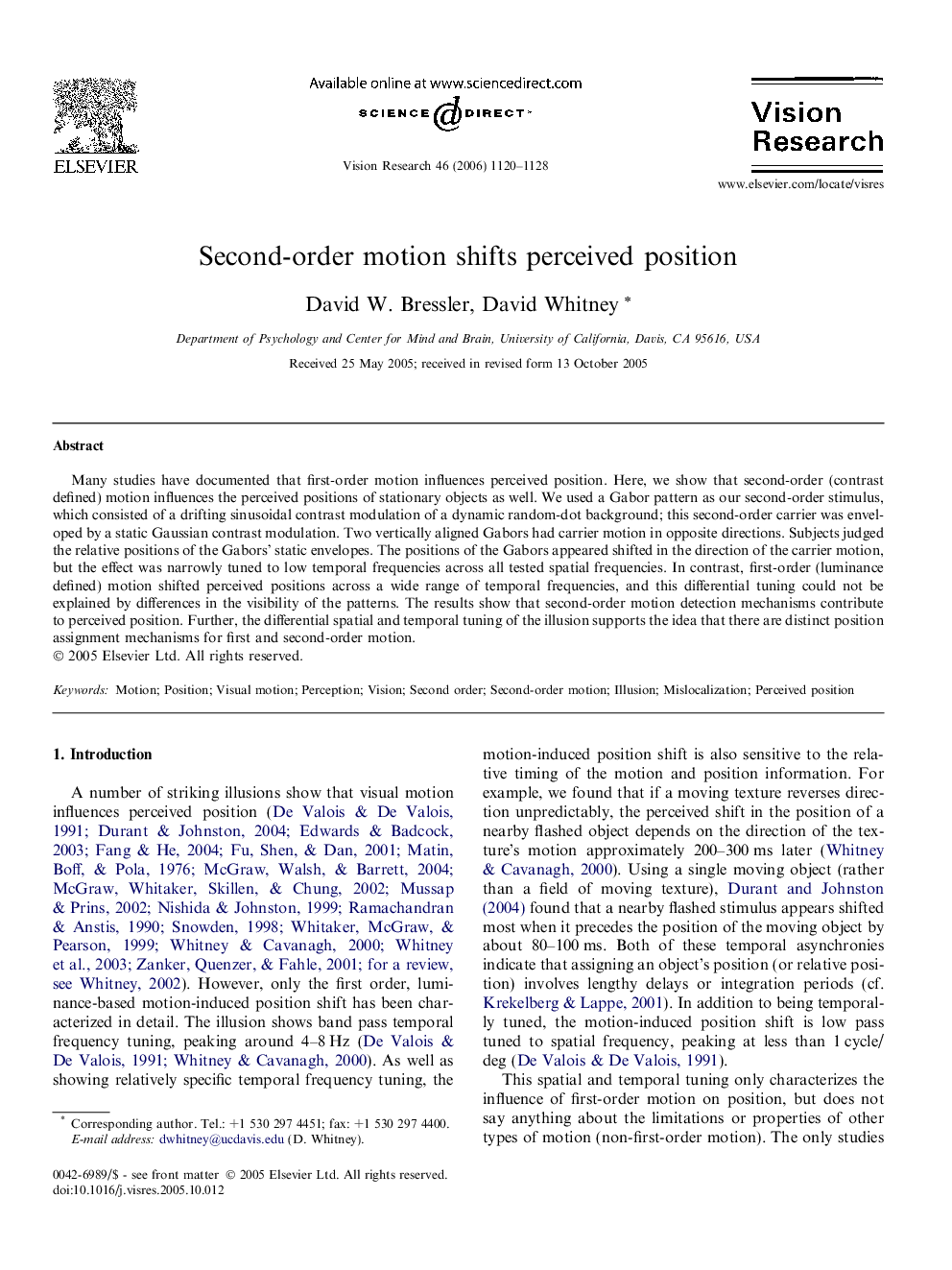| Article ID | Journal | Published Year | Pages | File Type |
|---|---|---|---|---|
| 4036369 | Vision Research | 2006 | 9 Pages |
Many studies have documented that first-order motion influences perceived position. Here, we show that second-order (contrast defined) motion influences the perceived positions of stationary objects as well. We used a Gabor pattern as our second-order stimulus, which consisted of a drifting sinusoidal contrast modulation of a dynamic random-dot background; this second-order carrier was enveloped by a static Gaussian contrast modulation. Two vertically aligned Gabors had carrier motion in opposite directions. Subjects judged the relative positions of the Gabors’ static envelopes. The positions of the Gabors appeared shifted in the direction of the carrier motion, but the effect was narrowly tuned to low temporal frequencies across all tested spatial frequencies. In contrast, first-order (luminance defined) motion shifted perceived positions across a wide range of temporal frequencies, and this differential tuning could not be explained by differences in the visibility of the patterns. The results show that second-order motion detection mechanisms contribute to perceived position. Further, the differential spatial and temporal tuning of the illusion supports the idea that there are distinct position assignment mechanisms for first and second-order motion.
